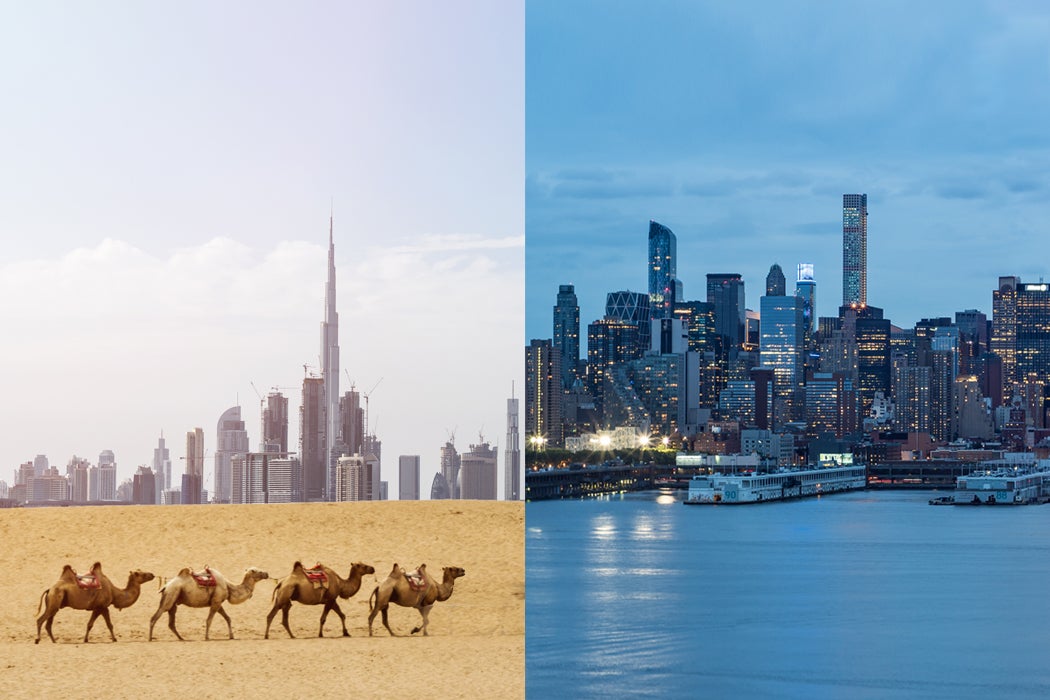All around the world, people are moving into cities at a rapid rate. Today, fifty-five percent of the world’s population lives in urban areas, and the U.N. expects that to rise to sixty-eight percent by 2050. Given the problems with suburban sprawl and human encroachment into wild areas, concentrating more of the population into smaller areas is largely a good thing for the environment. But, as architecture and urban planning scholar Douglas Kelbaugh writes, population density alone isn’t enough to make a place environmentally friendly.
Kelbaugh contrasts Manhattan with the fantastical hyper-modern cityscape of Dubai. Both cities are financial, academic, and cultural centers where maritime ports and airports have contributed to their growth and status. But their environmental impacts are decidedly different. Living in Manhattan means an unusually eco-friendly lifestyle for Americans—typically including travelling by subway or on foot and living in compact, efficient apartment buildings. Dubai, on the other hand, has “the planet’s highest per capita ecological footprint.”
What makes the difference? Manhattan’s grid system, designed by state-appointed commissioners back in 1811, helped create a highly walkable city of mixed-use neighborhoods. While New York’s east-west blocks are longer than ideal, its relatively frequent intersections when walking north or south allow for a variety of routes to any destination and makes it easy to avoid congested areas. The grid system also helps ensure relatively equal access to sunlight, while the square corners assist in surveying, assessing, and construction, leaving less unbuildable land.
In Dubai, on the other hand, grants of large tracts of land to private developers promoted the development of these parcels as self-contained, sometimes gated, communities. With no comprehensive plan for the city, and no cross-connections like the paths that run through New York’s Central Park, these neighborhoods often “act as large lakes that must be driven around,” Kelbaugh writes.
Get Our Email
The upshot is that Dubai’s residents tend to live in low-rise residential neighborhoods featuring gates and cul-de-sacs. Meanwhile, many of its towers are astonishing from a distance but designed with little consideration for their effect on the ground-level life of the city, leading to urban spaces that can be “alienating and scaleless,” Kelbaugh writes. Wide streets and superhighways move vehicles efficiently (at least when construction doesn’t slow them to a crawl), but leave little room for pedestrians or bicycles. The residents’ heavy use of vehicles contributes to their large ecological footprints.
Kelbaugh notes that there are exceptions to these general observations about Dubai. Plazas, pedestrian malls, and a Metro system—which was new when he wrote the article in 2013—suggest the potential for a less vehicle-intensive kind of city life.
Meanwhile, the contrast between New York and Dubai may yield lessons for all of us about how to plan for global urbanization.







